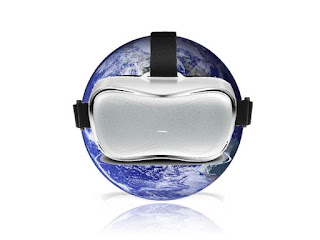A Case Study - The Impact of VR on
Academic Performance, published jointly by the Beijing Bluefocus E-Commerce Co. and the Beijing
iBokan Wisdom Mobile Internet Technology Training Institutions offers some promising, although limited, insight
into the use of VR in education.
Purpose
The experiment sought to show the difference
between traditional teaching and VR-based teaching in astrophysics, along with
impact upon student learning.
Assumptions
The authors explain that, in astrophysics,
students cannot really “conduct experiments” like they would in other classes. “Students
can only try to understand it through their imagination and teacher’s
explanation.” The study
assumes that VR-based teaching is “vivid and interactive,” making it entirely
possible for students to understand abstract concepts “in a three-dimensional
way; conduct simulated operations; and let students experience the scenarios at
different cosmic velocity.”
Another assumption was that VR would support both theoretical knowledge as well as practical
skills training by providing an immersive learning experience, enhancing
students' sense of active involvement in class, and simply making learning more
fun. The authors kvetched: “Most students lack interest in
boring teaching and learning.” Enter virtual reality.
Procedures
The study was conducted at two full-time
high schools in Beijing, with equal numbers of male and female students. They
represented from A to C students in their normal classroom performance. The
students were divided into groups for this study: one group adopted VR-based
instruction (defined as thirty minutes of VR-based teaching), while the other
group approached the content from a traditional teaching perspective (defined
as thirty minutes of lecture and PowerPoint).
The same teacher was employed in all groups to avoid any experiment
deviation caused by the professional difference among teachers. Immediate post-tests
were then administered after the
teaching to contrast both the academic performance and learning efficiency between
the two groups. A second test was administered two weeks later to see if new
knowledge was retained. Three HTC Vive virtual reality headsets were
used in this study.
See next week's post for the surprising conclusions...



